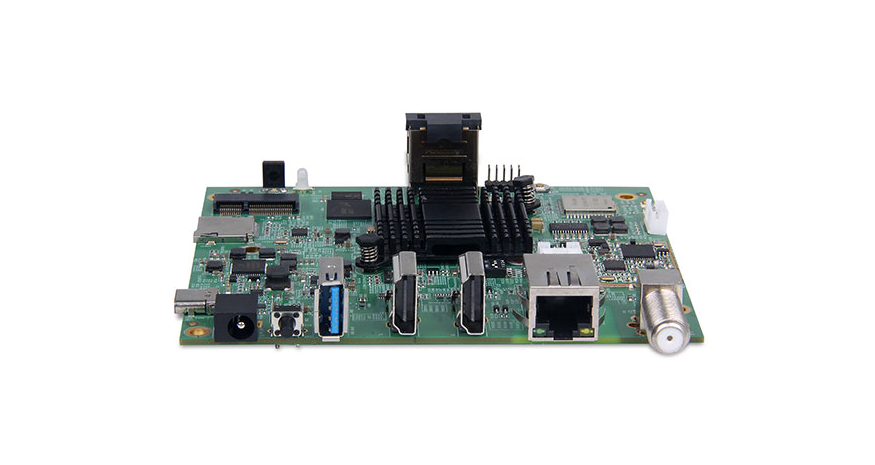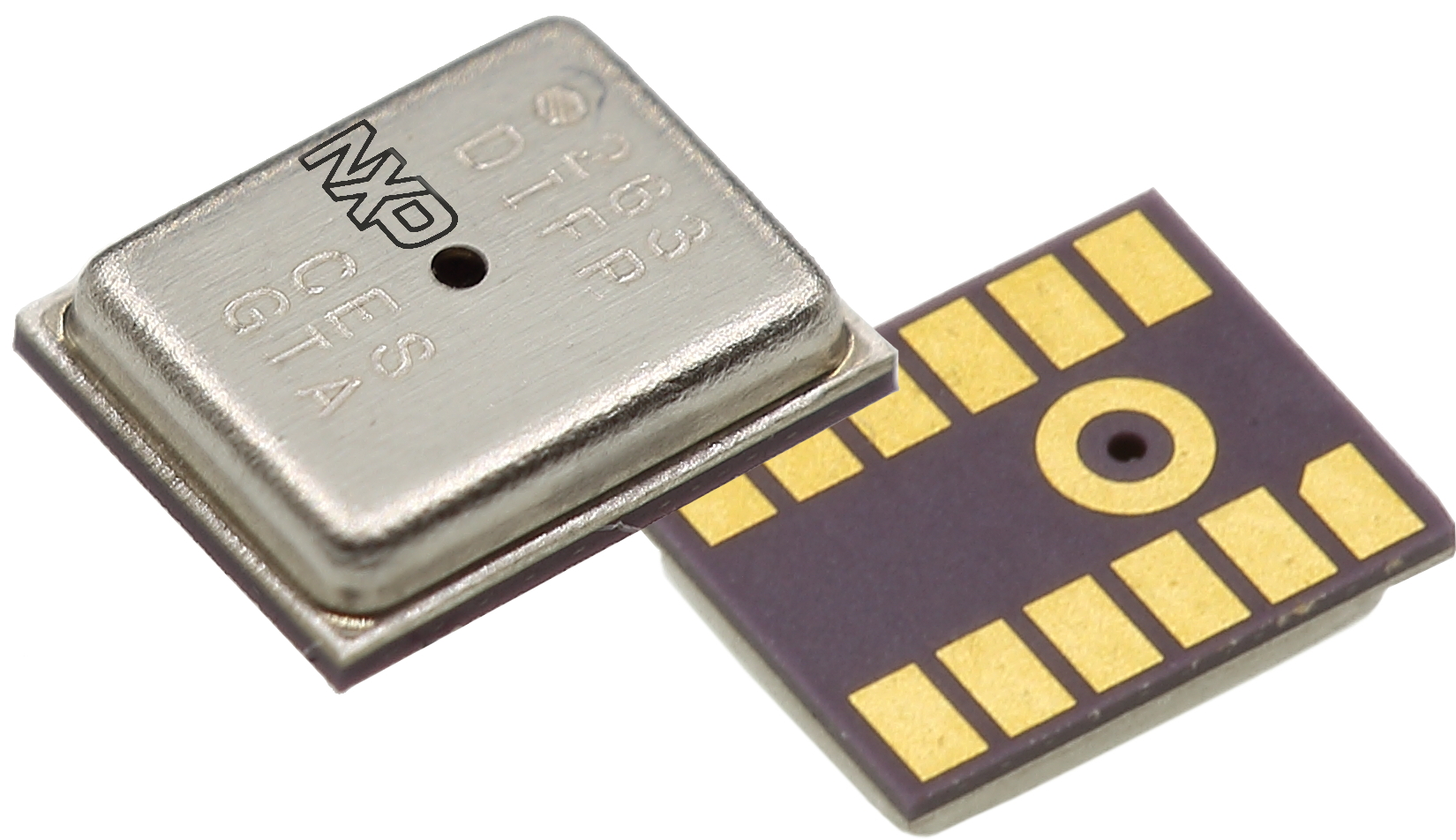
NXP RW612: A Tri-Radio Wireless MCU Integrates Wi-Fi 6, Bluetooth 5.4, and 802.15.4 for Smart Home and Industrial Automation
The NXP has recently introduced RW612, a tri-radio wireless MCU integrating Wi-Fi 6, Bluetooth Low Energy (LE) 5.4, and 802.15.4 radios. Powered by a 260 MHz Arm Cortex-M33 core with TrustZone-M, it includes 1.2 MB of SRAM and a high-bandwidth Quad SPI interface with secure decryption for off-chip XIP flash access. The Wi-Fi 6 offers dual-band 2.4/5 GHz support, low latency, and enhanced network efficiency. At the same time, Bluetooth LE features a 2 Mbps high-speed mode and extended range, supporting the Thread mesh networking protocol for IoT devices.
It also supports Matter over Wi-Fi and Thread for interoperability. Enhanced security is provided through NXP’s EdgeLock, enabling secure boot, debug, firmware updates, and key management with hardware cryptography and PUF technology. Designed for efficient power management, it runs on a single 3.3 V supply with independent wake-up options for various subsystems. This is ideal for applications in smart homes, industrial automation, enterprise environments, and smart energy solutions.
Previously, I wrote about the NXP Trimension SR250, which can work with host processors like i.MX, RW61x, and MCX families. We have also learned about STM32WLEx an ultra-low-power wireless MCU, similar to the RW612. Similarly, we have covered some MCUs including the STMicro STM32C071, the Makerdiary iMX RT1011, the JieLi Tech AC6329C4, and many more. Feel free to check those out, if you are interested in this topic.

NXP RW612 tri-radio wireless MCU Specifications:
- MCU Core:
- 260 MHz Arm Cortex-M33 with TrustZone-M
- 1.2 MB on-chip SRAM
- Memory Interfaces:
- Quad FlexSPI interface for XIP flash with on-the-fly decryption
- PSRAM interface for additional memory
- Peripherals:
- Up to 5 FlexComm interfaces (configurable as SPI, I²C, I²S, UART)
- LCD interface
- IEEE 1588 RMII/Fast Ethernet
- Wireless Connectivity:
- Wi-Fi 6 (802.11ax)
- Dual-band (2.4 GHz and 5 GHz), 1×1, 20 MHz bandwidth
- WPA3 security, extended range
- Target wake time (TWT)
- An integrated power amplifier (PA), low-noise amplifier (LNA), T/R switch, up to +21 dBm Tx power
- Bluetooth Low Energy 5.4
- Supports Bluetooth 5.2 features, 2 Mbps high-speed mode, long-range, extended advertising
- Bluetooth 5.4 certified
- Integrated PA / LNA with up to +15 dBm Tx output with 802.15.4 radio
- I²S and PCM audio interfaces
- 802.15.4
- Supports Thread mesh networking
- Matter protocol support over Thread or Wi-Fi
- Integrated PA / LNA with up to +15dBm Tx output shared with BLE radio
- Wi-Fi 6 (802.11ax)
- Security:
- NXP EdgeLock with secure boot
- secure debug, and secure firmware updates
- Hardware cryptography and PUF (physically unclonable function) for secure key management
- PSA Certified Level 3
- SESIP Assurance Level 3
- Hardware root of trust
- NXP EdgeLock 2GO Trust Provisioning
- Power Management:
- Single 3.3 V supply with integrated buck regulators and LDOs
- Independent power modes for applications and radio subsystems
- Individual subsystem wake-up through dedicated GPIO, IRQ and RTC
- Low-leakage always-on power domain enabling fast wake-up
- Operating Temperature:
- Wide temperature range with modules supporting up to -40 to 85°C

Extensive software support is provided by the RW612 in terms of software to simplify development and bolster security. Essential drivers and middleware are supplied by its MCUXpresso SDK, making application development smoother and more efficient. For real-time operations, it includes FreeRTOS, with networking capabilities through the lwIP TCP/IP stack and secure communications via mbedTLS. Additionally, trusted execution can be enhanced by the availability of Trusted Firmware-M (TF-M), which adds an extra layer of security to application deployment. Furthermore, developers are aided by the MCUXpresso config tools through simplification of the setup of pins, clocks, and peripherals, streamlining customization across a range of applications.

NXP also provides the FRDM-RW612, a development board designed for rapid prototyping with NXP’s RW61x series, featuring Wi-Fi 6, Bluetooth Low Energy, and 802.15.4 tri-radio wireless capabilities. It provides access to the MCU’s I/Os, an external memory, and includes an onboard debugger. Key features include an Arm Cortex-M33 processor, 1.2MB SRAM, multiple connectivity options (Wi-Fi, Bluetooth, Ethernet, USB Type-C), and support for Zigbee and Thread. With headers for Arduino, FRDM, mikroBUS, and Pmod expansion, it’s suitable for applications in smart home tech, industrial automation, and IoT devices, from air conditioning systems to home security and monitoring solutions.

Additionally, the RW612 series includes part numbers RW612ET, RW612HN, and RW612UK, each offering integrated tri-radio support for 1×1 Wi-Fi 6, Bluetooth Low Energy 5.4, and 802.15.4. The RW612ET comes in a TFBGA145 package with 145 terminals, a 0.5 mm pitch, and an 8 mm x 8 mm x 1.07 mm body. The RW612HN is packaged in an HVQFN116 format with 116 terminals, a 0.5 mm pitch, and a 9 mm x 9 mm x 0.85 mm body.
In case of pricing, the RW612 series includes the following:
- RW612ET/A2IK: Tray-packed, minimum order 1,740 units, $6.89/unit (1K), 26-week lead.
- RW612HN/A2IK: Tray-packed, minimum order 1,300 units, $6.62/unit (1K), 26-week lead.
- RW612UK/A2IZ: Reel-packed, minimum order 2,000 units, $6.52/unit (1K), 26-week lead.
The above option offers different packaging and order quantities for various needs. Moreover, the FRDM-RW612 board is priced at $30.00, though current stock availability isn’t specified. Additional information is available on the company’s product page along with documentation, links to development tools, resources, a datasheet and a reference manual The launch blog post might also offer some extra insights.


















